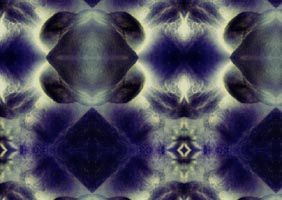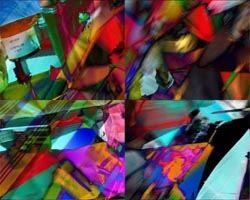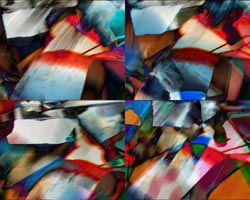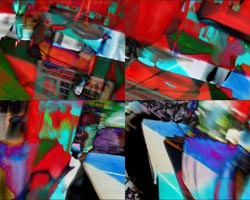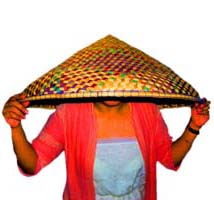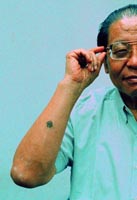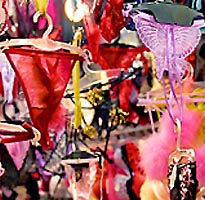Danny Lim's "Anwar", "Hisham", "Kit Siang" and "KJ"
Danny Lim is a journalist for The Edge business weekly, writing and photographing for The Edge's monthly magazine, Off The Edge. His photographic credits have included the first three covers of Off The Edge, and stills for various local indie films. He has also directed a documentary short, 18?.
About the works:
Blending the iconic with the iconoclastic, these vastly different portraits of politicians re-contextualise the sales pitch of politicians with the artist: me selling the politicians selling themselves.
As politics today is essentially about selling ideology, ideas and personalities to the electorate, I've attempted to recontextualise their sales pitch within the frame of my own "pitch", so to speak.
The choice of politicians portrayed within my work here was not so much 'selected' as they happen to be the four I incidentally have had access to photograph with a measure of proximity in the course of my work as a journalist. 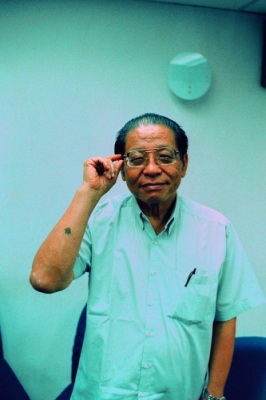
'Kit Siang' was photographed at the DAP headquarters, using 35mm reversal, and cross-processed as a colour negative to draw out saturation and entice the unpredictable hues that is often a result of cross-processing.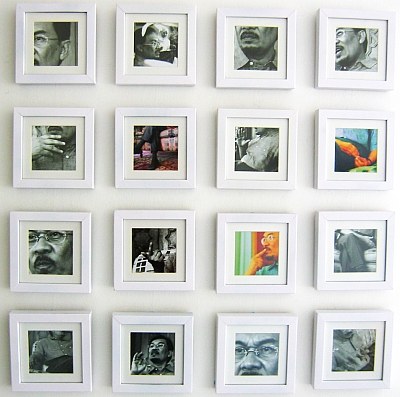
'Anwar' was shot at Anwar Ibrahim's residence in Damansara Heights in January 2005, using digital and colour reversal film.
'Hisham' was shot in Kuala Berang, Terengganu during a by-election in August 2004, on digital and colour reversal film.
'KJ' was shot in Kuala Berang, Terengganu during a by-election in August 2004, using digital film


